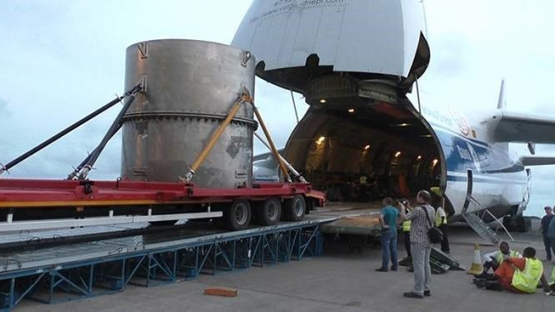Almost 3500 kg of high enriched uranium (HEU) has been removed from research reactor sites worldwide over the last few decades as part of global efforts supported by the IAEA. Upon the request of Member States, the IAEA has assisted with the conversion of research reactor fuels to low enriched uranium (LEU) in order to reduce the proliferation risks associated with HEU, which contains more than 20% fissile uranium-235.
While most research reactors were built in the 1960s and 70s with technology that required HEU to perform experiments intended for scientific research, today much of this research can be carried out using LEU, in which the concentration of radioactive uranium-235 is below 20%.
“The international community has successfully provided technological solutions for converting HEU fuel to LEU fuel in research reactors,” said Thomas Hanlon, Nuclear Engineer Expert at the IAEA. “The trick is to do this without compromising the scientific research.”
Today, about 220 research reactors operate across 53 countries, and 171 of these reactors were constructed with an HEU core. Seventy-one HEU fuel reactors have been converted to LEU since 1978. Nuclear power reactors, which are used to generate electricity, run on LEU.
The IAEA has supported HEU to LEU fuel conversions or HEU repatriations in Austria, Bulgaria, Chile, China, the Czech Republic, Georgia, Ghana, Hungary, Jamaica, Kazakhstan, Latvia, Libya, Mexico, Nigeria, Poland, Portugal, Romania, Serbia, Ukraine, Uzbekistan and Viet Nam. The IAEA has supported HEU minimization through technical cooperation projects, fact-finding missions, coordinated research projects, technical and consultancy meetings and procurement assistance.
With less enrichment, we are reducing the attraction to the material and making the world better.







